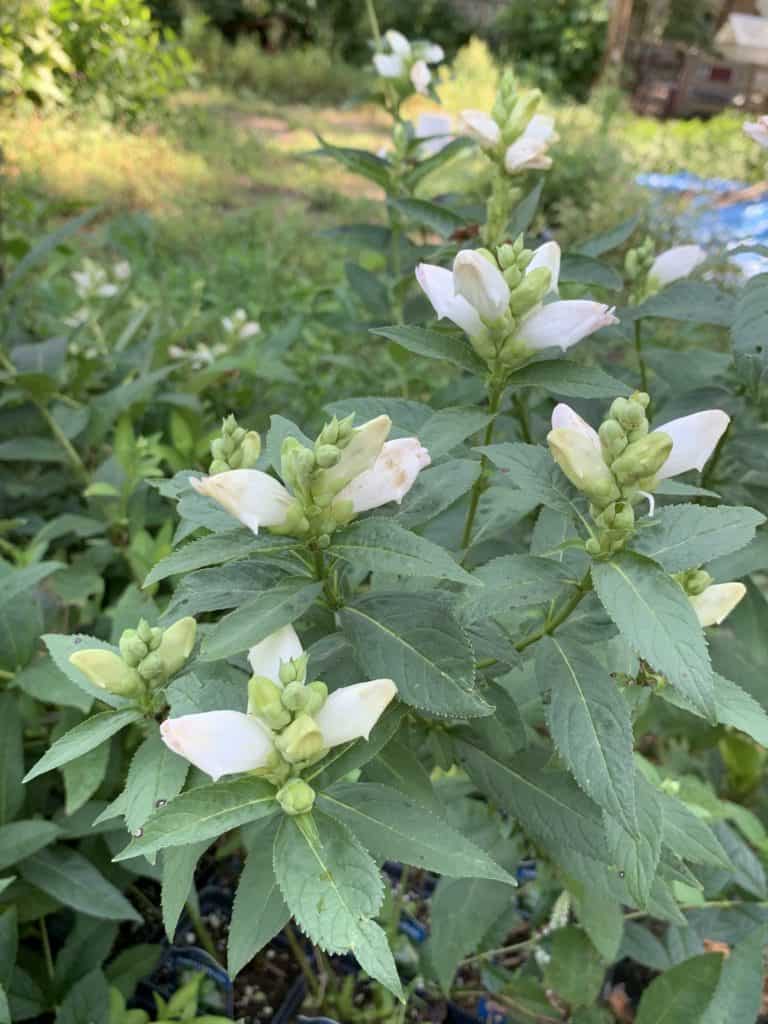Gardening for Health

Turtleheads in the Garden
By Maria Price
Late summer is the time for native turtlehead plants to bloom. Chelone glabra, or white turtlehead is from the Greek chelone meaning tortoise, referring to the flowers which look like a tortoise’s head, glabra or glabrous means not hairy.
Turtlehead plants grow 2 to 3 feet tall in zones 5 to 8. This hardy native perennial with glossy green foliage prefers moist soil in full to part sun and is tolerant of a variety of soils except very dry. Good air circulation is necessary to prevent powdery mildew. White turtlehead is a stiffly erect, clump forming perennial attracting butterflies and birds. White turtlehead is often a common plant in the open or closed canopy wetlands in this region. It is one of the key larval food plants for the Baltimore checkerspot butterfly. It spreads easily via rhizomes, otherwise seeds can be collected in late summer and early fall to scatter in moist to wet areas. Use the plant in a moist meadow, on the edge of a woodland or in a butterfly, bog or a native garden.
Long-horned bees, bumble bees and hummingbirds are the most frequent visitors to turtlehead plants. Bees have to push their way into the flower by forcing open the upper and lower lips to access the nectar. Nectar is secreted around the base of the ovary rewarding pollinators strong enough to open the flower. The bees’ efforts are worthwhile as over three milligrams of sugar are produced daily. Bumble bees collect pollen on their thorax and transfer it to other flowers as they move from flower to flower.
Pink turtlehead or Chelone lyonia, is naturally found in higher elevations. Proven Winners has a variety named “Hot Lips,” a pink turtlehead plant with rosy pink snapdragon-like flowers in August to September. This more upland species may not do as well in hot, humid regions.
